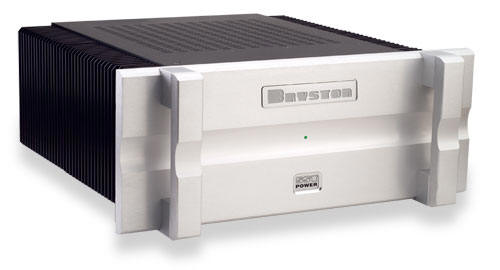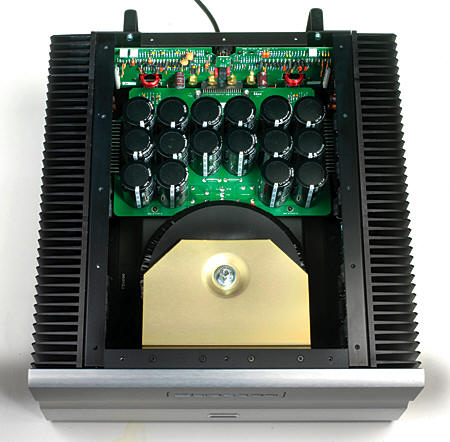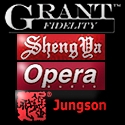
You are reading the older HTML site
Positive Feedback ISSUE
44july/august 2009
bryston
28B SST amplifiers
as reviewed by John Brazier

|
As I have written in the past, the Bryston 3B ST was the first amplifier that proved to me that amplifiers do make a difference and that the right amplifier can make the difference. Unfortunately, my 3B was stolen while I was in graduate school and after the insurance company paid off there seemed to be a whole lot more important stuff to get before replacing my higher end set up; things like clothing, books, and weekend get-a-ways seemed to offer more immediate satisfaction. Nonetheless, I did get a scaled down system to get me through the rest of school and to a point where I could start rebuilding.
I really enjoyed the 3B ST for its impressively wide and deep soundstage as well as its tight and deep bass. Now, nearly 13 years later, I look back and recall thinking at the time that the 3B ST mated then with the Bryston BP-25 preamplifier, had to be as good as it gets. Ahhh… if it was only that simple and if it were only as good as our memories imprinted such experiences to be…or maybe it was as good as I remember…
Regardless and more recently, I reviewed Bryston's 4B SST and while it had the positive traits I so fondly recall of the 3BST, there was so much more to appreciate, not only objectively as an amplifier design but subjectively too given my own 13 years of listening maturity and abilities. One of the more objective elements was its amazingly controlled output at nearly all SPL levels. The 4B SST was distortionless and just as listenable at "11" as it was at say "5" on the volume control. The 4B SST exhibited many other characteristics that raised the overall performance level to that of a very very good amp.
Over the past year at least the majority of my audio related efforts have been dedicated to locating and selecting a new personal reference amplifier for my system. Accordingly, over the past six months, I happened across a couple of reviews of the 28B SST, Bryston's 1000-watt mono-block amps, and was intrigued. What I read, and what piqued my interest, was that the 28's had all (and more) of the fundamental raw power and control of an amp like the 4B SST but the sound had been meticulously refined and was being reproduced at a quality level not previously reached by Bryston, much less its competitors. These amps were and are, for all intents and purposes, a true state of the art amplifier design. Considering Bryston's outstanding reputation in both professional and consumer audio circles, the forgoing interpretation of these reviews suggested, to me, that the 28BSST must really be a remarkable amplifier. Consequently, given my history and predilection for Bryston products, I set out to get a hold of the 28B SST and, eventually, did just that.

A couple of months ago, two very handsome 90lb, 19" silver face-plated and rack handled amps made their way into my home. Almost immediately they replaced the Clayton M300s I had in for review while also usurping the duties of my current reference amplifiers the NuForce Ref 9 SE V2 monoblocks, which have been a fixture in my system for about 3 ½ years.
Out of the box, the sound was a bit uptight and edgy. Responding to my subsequent inquiry about "burn-in", Bryston responded with tongue firmly in cheek, suggesting their engineers would tell me they are as good as they are going to get once they are plugged in and turned on. More conventional wisdom at the home base was that after a week or so they would be performing and sounding at their best. Although not clear on the number of hours, I do know that each amplifier (and perhaps their other products) are "burned in" on the bench for sometime before shipment. (Obviously a business decision made without the input of the engineers). Furthermore, it was just about a week later, or 40 to 50 hours of use, when they really settled in and began to sound more refined and liquid. In retrospect, I'd estimate they were at 90% out of the box; 98% a week later and now, 8 weeks later are certainly at 100%—although one never knows for sure and there could be more incremental improvements to come.
As referred to above, the distortionless power of these amplifiers is simply astounding. First, let me state for the record that I am not a head-banger nor do I listen much above "normal" levels, although slightly elevated. I think music should be played at an authentic level without driving out family members. With that said, it is so easy to tick the volume up now and again. But, it is not until some outside distraction puts the volume in perspective did I realize it was that loud.
Notably, the reverse is true too. Played at lower levels the sound is nearly as complete and convincing as it is at much higher levels. Of course the more visceral aspects of volume are not there, but surprisingly, there are no absences either. This low volume quality is something I have not often experienced. More often than not, as the volume goes down so goes the listenability of the music. Not here.
Perhaps the longest existing personal reference disc I own is Stacy Kent's Love is…The Tender Trap, but for this review, I am using her more recent release Breakfast on the Morning Tram and more specifically her cover of Stevie Nicks' "Landslide." While the arrangement is somewhat similar to Nicks', Kent's voice has a quality that the 28B SSTs are able to bring out and flow into the room—the buzzword being liquidity. Kent is a jazz standard vocalist by trade and her take on "Landslide" is in that same vein. However, these amplifiers are able to capture the full performance and reproduce it with an energy and authenticity that belies it being a recorded event or Kent's jazz roots.
In 2008 Nils Lofgren released The Loner: Nils Sings Neil, which is an acoustic guitar collection of Neil Young covers. Nils' technical prowess is captured best in the title-referenced track, "The Loner." There are very few amplifiers that could possibly reproduce as faithfully the technical aspects of such a track, however, the Bryston 28B SSTs are one the few, as the range and dynamics of Nils' six-string picking is remarkably focused under Bryston's spotlight. Not only are the dynamics an indispensable component of the sonic whole, but the complexity of the piece itself is not in the least bit lost or hindered by the amplification. In fact, the Brystons seem to thrive when so challenged.
My newer reference front-end, the Cary 306 Pro also plays SACD and while I now have a collection of such hi-rez discs totaling 3, I have heard the impressive sound they produce. One is Bob Dylan's Blood on the Tracks. The contents of which are familiar to audiophiles and music lovers of all ages. Many, like me, have had the album and later the CD, but as a rule, I have no intention on replacing my Redbook collection with SACD reissues. But having this disc as a long term standard and reference point, it was not only critical to the evaluation of the Cary but proved to be equally as valuable in evaluating the Brystons. Without going into a review of the former (coming soon), the difference in the created sound, as a whole, was significantly improved once I place the Bryston in line. Perhaps most striking was the realism and naturalness of the presentation as it poured out into the listening room. Dylan never sounded so good in his not-so-good sounding way. There was an extra identifiable, yet not distracting, energy to his voice. The arrangement of each track was more thoughtfully conveyed and the mood from track to track was more notable and less contrived.
Somewhat surprisingly, the bass depth was not extraordinarily deeper, or better defined as a whole than many of the higher end amplifiers I have come across in recent years. While it was certainly no less deep or defined, I expected more slam with the Brystons' measuring 1204 watts driving my Verity Audio Parsifal Ovations (which, I acknowledge, are not particularly known for producing prodigious bass, much less slam). I will also note that for the first three-fourths of my time with 28Bs my reference speaker wires, Crystal Cable Reference Connects, were shipped back to The Netherlands because the new puppy in my house had chewed through one of them. In the interim I had borrowed a pair of expensive and quite popular speaker wires from a friend. I enjoyed them, but I was so pleased to get the Crystal Cables back in and it was not until that time that the bass was fully realized. The lesson being that the bass seems more dependent on the cabling then any other aspect of the frequency range.
All in all, the Brystons are powerful, proficient, inspiring amplifiers that are at all times in total control. Commonly the typical solid-state amplifier review, or reviewer, inevitably compares the subject solid-state amp to some perceived tube amplifier standard. Not having a lot of tube experience, I don't feel properly equipped to make such a comparison. But here is what I can tell you, the mid-range produced through the Bryston 28B SSTs is as liquid, smooth, lacking in grainy digital artifacts, and as insightful into the soul of the music as I have ever heard. Prior to these amps, it was perhaps the Pathos Integrated I reviewed a few years ago that capitalized on these characteristics. More recently, the Clayton M300s solid states amps impressed me greatly with their vocal range enjoyability. However, by comparison, the Brystons win out in a bit way.
For $16,000, you get tons of performance wrapped in a handsome and now classic, yet updated, looking chassis. I have been in the hunt for a new amplifier reference for some time. Although my search lost a bit of forward momentum when NuForce produced the V2 board for its 9 SE, I still knew I could get more performance out of my system. And, like many of you, I too was led to investigate a product I had read about. In this case, the Bryston 28B SSTs sounded, and otherwise proved, to be every bit as incredible as they were touted to sound. So much so, I dug deep and purchased the review sample. Very highly recommended. John Brazier
28B SST amplifiers
Retail: $17,000 a pair (or $8500 if you need them as singles)
Bryston
web address:
http://bryston.com

